The treaty designed to prevent the consumption of the materials that Depletes the Ozone Layer is known as the Montreal Protocol. It was a global agreement made in 1987 to protect the stratospheric ozone layer Earth’s protective shield. It called an ozone layer that protects humans and the environment from harmful ultraviolet radiation from the sun.
How does Ozone works?
The ozone layer filters out ultraviolet radiation if there is any hole in the coating. It directly causes dangerous disease like skin cancer and, also, reduces agricultural productivity. It designed to stop the production and import of ozone-depleting substances. And to reduce their concentration that mixed up with the atmosphere.
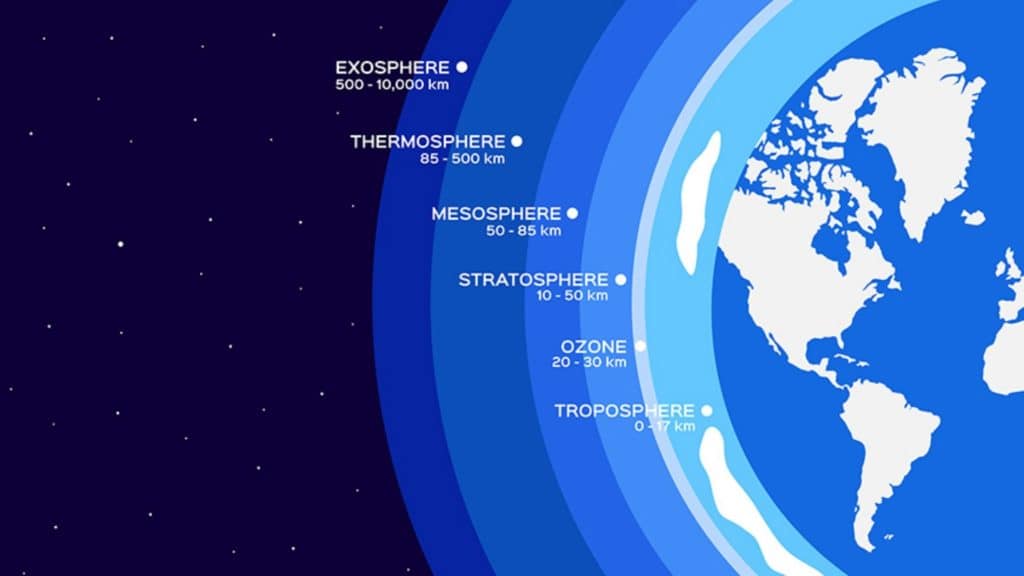
Who laid the foundations of the Montreal Protocol?
The United States sanctioned the Montreal Protocol in the year1988 and also has joined the four subsequent amendments. The United States I have been a leader within the Protocol throughout its existence. They also have taken many decisive domestic actions to phase out the production and consumption of ozone-depleting substances (ODS) such as chlorofluorocarbons (CFCs) and halons.
With proper intimation of the Montreal Protocol, the U.S. Environmental Protection Agency (EPA) estimates that Americans born between the year 1890 and 2100 expected to avoid the 443 million cases of skin cancer, approximately 2.3 million deaths based on the skin cancer, and more than 63 million cases of cataracts.
What is the role of Scientific Assessment panel?
The Montreal Protocol’s Scientific Assessment Panel of the Montreal protocol’s estimates that with the implementation of the Montreal Protocol. It can take nearly to complete recovery of the ozone layer in the middle of the 21st century.
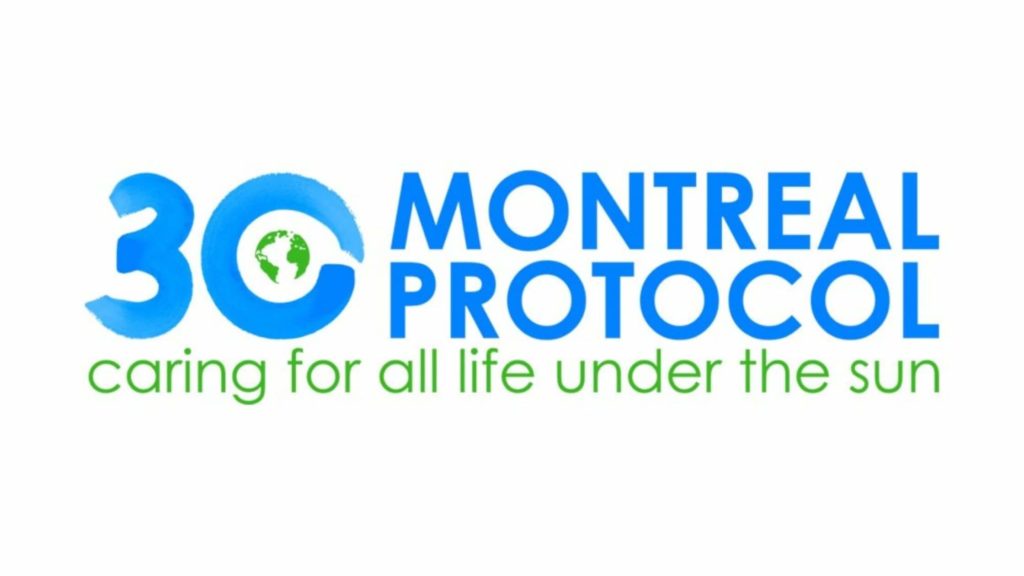
The U.S. plays an integral part in negotiating the Montreal Protocol. In the 1970s, it signifies that CFCs are used in daily household products such as air conditioners and refrigerators. They were depleting the Earth’s protective ozone layer and increasing the ultraviolet radiation level that reaches the Earth’s surface.
The United States is concerned with all assistants and stakeholders. They help advocate the healthy controls on the production and consumption of Ozone Depletion Substances, such as chlorofluorocarbons (CFCs) and halons. Promoting international cooperation, and building consensus to quickly phase out ODS. In history, the Montreal Protocol has received support from most United States industry and environmental advocates.
The Montreal Protocol is a type of collaboration. The 46 countries initially sign it, and the treaty now has nearly about 200 signatories. It is the product of the recognition and international agreement that ozone depletion is a major global problem. It can be in terms of its effects and causes.
The Montreal Protocol reduced the consumption and production of the different ODS in a step by step manner, with separate timetables for developed and developing countries.
It referred to as “Article 5 countries”. Under this deal, all the parties have their specific duty and responsibilities to phase out the different ODS groups, control ODS trade, annual reporting of data, a record of national licensing systems to control ODS imports and exports, and all other matters.
The Protocol’s initial agreement designed to reduce the production and consumption of several Chlorofluorocarbons and halons. By 80 per cent of 1986 levels by 1994 and 50 per cent of 1986 levels by 1999. The Protocol started working on Jan. 1, 1989. The presentation of this Protocol is related to the topic such as,
- Calculation of control levels (Article 3)
- Control Measures (Article 2)
- Control of trade with non-Parties (Article 4)
- The unique situation of developing nations (Article 5)
- Reporting of data (Article 7)
- Non-compliance (Article 8)
- Technical assistance (Article 10)
- The substances controlled in this Protocol described as:
- A (Chlorofluorocarbons, halons),
- B (other fully halogenated Chlorofluorocarbons, carbon tetrachloride, methyl chloroform),
- C (hydrochlorofluorocarbons),
- E (methyl bromide) and
- F (Hydrofluorocarbons).
The Parties to the Montreal Protocol amended in the Protocol, such as controlling new chemicals and creating a financial mechanism to enable developing countries to adapt. It also includes a unique adjustment provision that allows the Parties to the Protocol to respond quickly to new scientific information and confirmation—accelerating the reductions required for the chemicals already covered in the Protocol.
Types of Amendments in the Montreal Protocol:
- The London Amendment (1990): There is a change in the schedule of ODS emission by the proper phase-out of CFCs, halons, and carbon tetrachloride by 2000 in major developed countries, and by 2010 in several developing countries. Methyl chloroform added to control the ODSs, with phase-out in developed countries targeted to completed in 2005 in developed countries, and 2015 for more developing countries.
- The Copenhagen Amendment (1992) accelerated the phase-out of ODSs and hydrochlorofluorocarbons (HCFC) and certain phase-out for developed countries. Under this agreement, Chlorofluorocarbons, halons, carbon tetrachloride, and methyl chloroform targeted for complete phase-out in 1996.
- The Montreal Amendment (1997): This included the phase-out of hydrochlorofluorocarbons in developing countries and the phase-out of methyl bromide in the developed countries in 2005 and 2015 in developing countries.
- The Beijing Amendment (1999): This included tight controls on the production and HCFCs trade. Bromochloromethane also added to the list of controlled substances targeted to be phase-out in for 2004.
- The Kigali Amendment (2016): In this, it extended controls to phase down hydrofluorocarbons’ production and consumption (HFCs.These substances commonly adopted by industries moving away from ozone-depleting substances (ODSs) and harmful greenhouse gases directly cause a change in Earth’s climate.
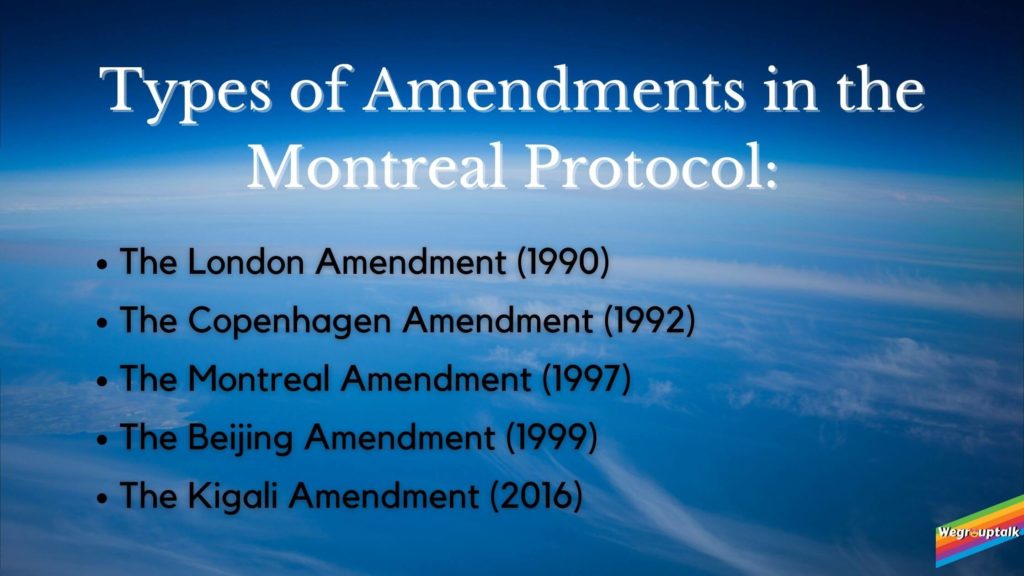
Montreal Protocol: Assessment Pannels
Montreal Protocol has advisory bodies that called as Assessment Pannels. The Assessment Panels are responsible for any kind of issue regarding the regular reports progress o the phase-out of ozone-depleting substances, including all the assessments of alternatives and reduction of Green House gases.
- TEAP: It stands for The Technology and Economic Assessment Panel (TEAP). It provides technical information related to the technologies that have been investigated and can quickly work to make it possible to get rid of Ozone’s use of Depleting Substances (such as CFCs and Halons).
- SAP – It stands for The Scientific Assessment Panel (SAP), which assesses the ozone layer’s depletion and relevant atmospheric science issues.
- EEAP: The Environmental Effects Assessment Panel (EEAP) considers the various causes and effects of ozone layer depletion.
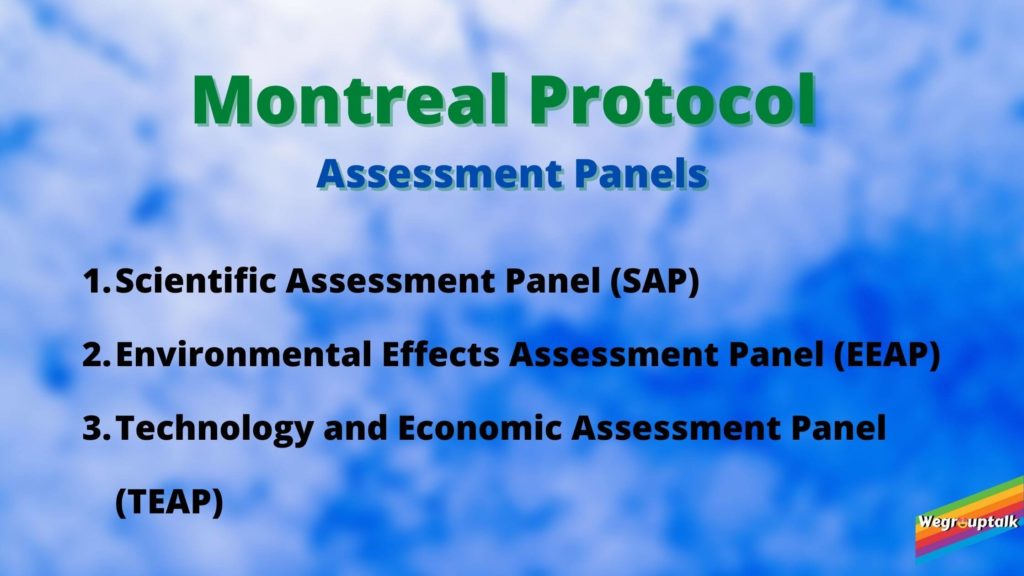
The 1985 Vienna Convention’s main objective is to preserve human health and protect the environment from the ozone depletion layer’s harmful effects. And the 1987 Montreal Protocol aims to repair the ozone layer through the worldwide control, reduction and consumption of ozone-depleting substances.
The international treaties for ozone layer protection: It proved that (CFCs) has effected the ozone layer and was also established in the year 1970. Under the charge of the United Nations Environment Programme (UNEP), two treaties signed after observing that the ozone layer depleted in 1980. The two treaties were the Vienna Convention and the Montreal Protocol.
The Vienna Convention was in the year 1985, and the Montreal Protocol was in the year 1987. All the member states of the United Nations had voted for these treaties. The Vienna Convention’s primary objective was to make sure to protect the environment from the harmful effects, also considering the ozone layer depletion and was also to preserve the human health on the same hand. The Montreal protocol’s primary objective was to repair the ozone layer by eliminating the substances that are depleting the ozone layer if the importance of the ozone layer neglected than it directly reduced.
The multilateral fund for the Montreal Protocol presentation:
The multilateral fund, also known as the ozone fund, was bought in 1990 in London when the parties’ second meeting took place at the Montreal Protocol. This fund called ozone fund aimed to support the developing countries to eradicate the substances depleting the ozone layer and HFCs from 2019. Between the years 1991 and 2018, this multilateral fund provided an amount of US$ 3.45 billion to support 8195 projects and activities in around 147 countries financially.
The aim was to reduce the consumption and production of ozone-depleting substances approximately 490,770 tonnes—the ozone fund considered as an essential means to achieve the Protocol’s objective in the developing countries.
Switzerland also said that it is good to know that the fund did not only focus on reducing the ozone layer substances but also concentrating on the environment. Switzerland is a contributor to the fund contributing an amount of US$ 2 million to the fund annually. Its primary role was to develop the guidelines and supervise the activities of the fund.
This Switzerland is a supporter of the Montreal Protocol in the developing countries directly and has involved in different projects with India, Indonesia, Argentina, Chile, Costa Rica.
Implementation of the Protocol in Switzerland:
The countries that have been most industrialized countries, including Switzerland, have adhered to the commitments. HFCs in Switzerland are only allowed to use where there is no substitute. The target has been reduced in regards to the HFC consumption slowly there. HFCs reduced by using other alternative technologies which include natural substances like hydrocarbons, water and ammonia.
Many experts say that we learned to work in peace and harmony in the upcoming Montreal Protocol. We also learned that we could invent better refrigerants that will not disturb the environment and lower impact. It will also not deplete the ozone layer and climate.
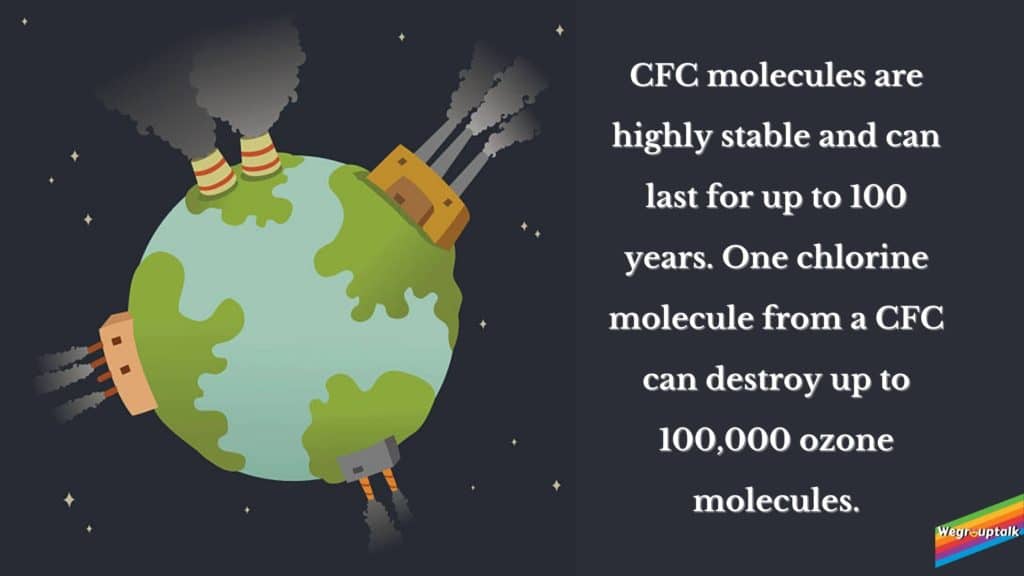
Also, the Montreal protocol has sown 99% of phase-out of CFC (Chloro Floro Carbons). The limited use of CFCs and the ozone hole also helped scientists make this problem manageable and work with everyone’s cooperation. Montreal Protocol also worked adequately as an international organization/agency came up with an urgent solution.
The issue demanded urgency solving skills. They also noticed that not noticing CFCs as an everyday use made this problem even worse, which immediately helped them get to the solution.
Follow us on FACEBOOK, INSTAGRAM and TWITTER to stay connected.
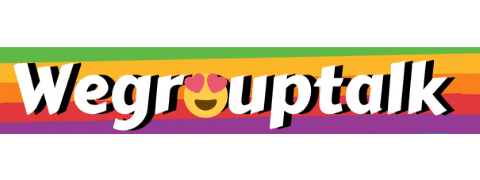
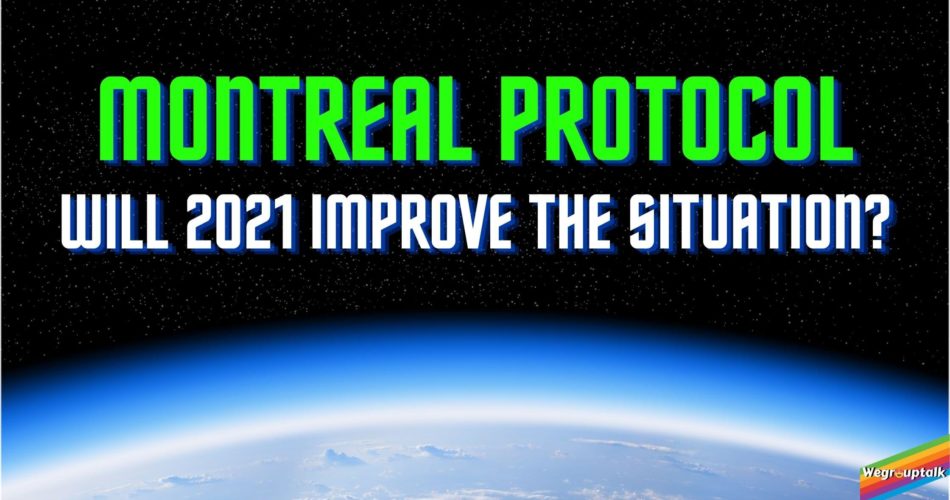



[…] Also Read- Montreal Protocol- What it is and Why? […]